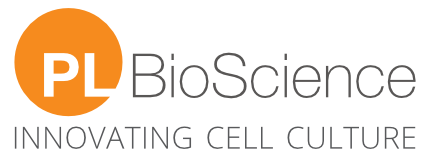
Three reasons for HPL instead of FBS
For all research and cell therapy approaches, cell expansion and thus cell culture media are used and needed. During the last decades (starting in the 1950s) animal serum was the “Gold Standard” for cell expansion because of its high growth factor content and universal use.
Cell expansion is a huge part of vaccine development, cancer and HIV research as well as other disease-related research fields where there is no cure so far (e. g. diabetes or wound management).
Stem cell treatments are a novel approach to treat diseases like diabetes, cancer or wounds in order to promote the regeneration of the patient’s own cells and tissues.
Increasing demand of cell culture supplements
According to different market research reports the need of cell culture supplements increases about 33% every year from 2020 to 2025. There should be a market potential of 167 billion US dollar by the end 2029. Cell therapy is mentioned as one of the most important markets. (1,2)
These numbers demonstrate the great importance of cell culture and thus the need for nutrient solutions.
Why should we change a thing regarding our current standard?
It is not only a fact of ethical research and a higher animal welfare understanding but also a fact of environmental adjustment, safety concerns and reliability of scientific findings.
Three reasons why animal sera are not suitable for Stem Cell Therapy
- Ethical concerns and animal welfare
- Risk of contamination with animal derived bacteria and viruses, transmission of prions
- Fluctuations in price and quality, leading to difficulties to contain reproducible results
The ethical dilemma in using animal sera for cell culture
Not only is the animal serum production, like Fetal Bovine Serum (FBS), depending on the meat and milk industry, it is also forbidden within the EU. This results in the shifting of the extraction of FBS to countries with lower animal welfare and quality standards like Brazil, Australia, South Africa, New Zealand and the USA. (3)
Although the meat consumption of lower and middle-income countries increases, cattle farming is dependent on a lot of outer factors such as water supply, droughts and land. The land that is affected by the environmental crisis is increasing. (4) All these factors lead to increasing and fluctuating prices and supply shortages of animal sera.
Safety concerns caused by a huge risk of contamination with animal bacteria and viruses as well as a transmission of prions (5,6), are another reason why researchers and companies around the world try to use and find alternatives for animal sera, especially for FBS.
Choosing xeno-free cell culture supplements over animal sera for cell therapies
For the development of cell therapies for human application, it should be mentioned that human origin (xeno-free) cell culture media are the right choice. Materials that are close to biologically equivalent are critical to reproduce the in vivo environment and achieve more reliable outcomes.
It is important to keep in mind that from a regulatory and process optimization perspective a standardized, quality-assuring and lot-to-lot stable product is the right choice. In addition to this, the cell proliferation should be suitable for the desired application and the cells should maintain their phenotype and differentiation potential.
Read more about: What are the requirements for cell culture media in stem cell therapies?
Why Human Platelet Lysate (HPL) is more sustainable:
- It is produced of already existing resources: recycling of transfusion-approved human thrombocytes.
- There is no need for deforestation.
- The production is not dependent on the slaughter industry: No unborn calves die.
Get more information about Human Platelet Lysate and our products:
ELAREM™ Human Platelet Lysates
Why using Human Platelet Lysate for clinical application and clinical trials?
- Homogenous and standardized production process
- Stable quality and reproducible results between batches
- Contains abundant growth factors and cytokines which often leads to less HPL supplementation and more cost-effective usage
- Stimulates cellular proliferation – accelerates expansion cycles of cells
- Maintains phenotype and differentiation potential
All this leads to the conclusion that animal sera are not a suitable cell expansion medium for the development of cell therapy applications.
If you need advice to find the most suitable cell culture medium for your approach, contact our product specialists.
- https://www.rolandberger.com/en/Insights/Publications/Cell-and-gene-therapies-Pharma%27s-next-big-wave.html (Internet, last visited 25.4.22)
- https://www.researchnester.com/reports/global-cell-therapy-technologies-market/1676 (Internet, last visited 25.4.22)
- Gerhard Gstraunthaler, Toni Lindl:”Zell- und Gewebekultur“, 2020, 8th Edition, Springer Spektrum, ISBN 978-3-662-62605-4, https://doi.org/10.1007/978-3-662-62606-1
- “The state of food and agriculture – overcoming water challenges in agriculture”, OECD FAO Agriculture Outlook 2020, ISSN 0081-4539 [PRINT], E-ISSN 1564-3352 [ONLINE], ISBN 978-92-5-133441-6
- European Pharmacopoeia 9.0 5.2.12. Raw materials for production of cell-based/gene therapy products, 01:2017:50212
- “Regulatory-compliant conditions during cell product manufacturing enhance in vitro immunomodulatory properties of infrapatellar fat pad-derived mesenchymal stem/stromal cells.”
Kouroupis D, Bowles AC, Greif DN, et al. (2020). Cytotherapy.





